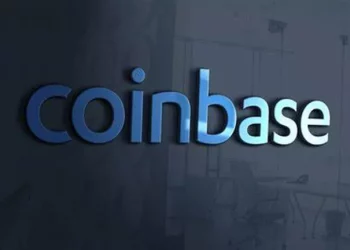Understanding Wallet Addresses on Binance:
Definition and Importance
Types of Wallet Addresses Supported by Binance
Bitcoin Wallet Address:Binance supports the standard Bitcoin wallet addresses which usually start with the number “1” or “3” for legacy and SegWit addresses respectively. These addresses are based on the Bitcoin protocol and are used for receiving and storing Bitcoin on the Binance platform. For example, if you are expecting a Bitcoin payment from someone outside of Binance or want to transfer your Bitcoin holdings from another wallet to Binance, you will use this specific type of address.
Ethereum Wallet Address:Ethereum wallet addresses on Binance are different from Bitcoin ones. They typically start with “0x” followed by a series of alphanumeric characters. Ethereum has its own blockchain and its addresses are used for handling Ether (ETH) as well as various Ethereum-based tokens like ERC-20 tokens. Binance allows users to manage and receive these tokens using the appropriate Ethereum wallet addresses.
Other Altcoin Wallet Addresses:Apart from Bitcoin and Ethereum, Binance supports a vast array of altcoins such as Litecoin (LTC), Ripple (XRP), Binance Coin (BNB), and many more. Each altcoin has its own unique wallet address format which is specific to its underlying blockchain technology. For instance, Litecoin addresses usually start with “L” or a specific set of characters based on its protocol, and Ripple addresses have their own distinct format as well. Understanding these different address formats for each altcoin is vital when dealing with multiple cryptocurrencies on Binance.
Accessing Binance Platform to Find Wallet Addresses:
Binance Website
Logging In:The first step is to visit the official Binance website and log in to your account. Enter your registered email address or mobile number along with your password. In case you have enabled two-factor authentication (2FA), you will also need to enter the verification code generated by your 2FA app (such as Google Authenticator) to complete the login process.
Navigating to the Wallet Section:Once logged in, look for the “Wallet” option usually located in the top menu bar or on the sidebar of the website interface. Click on it, and it will expand to show different categories related to your wallet, such as “Overview,” “Deposit,” and “Withdraw.”
Finding the Specific Wallet Address:To find the wallet address for a particular cryptocurrency, click on the “Deposit” option. You will then be presented with a list of all the cryptocurrencies supported by Binance. Locate the specific coin you are interested in, and next to its name, you will see a button that says something like “Deposit Address” or “Receive.” Click on that button, and your unique wallet address for that cryptocurrency will be displayed. Make sure to copy it accurately as you will need it for receiving funds. You can usually copy it to your clipboard by clicking on an icon that resembles a clipboard or by right-clicking and selecting the copy option.
Binance Mobile App
Downloading and Installing the App:If you prefer using the mobile app for convenience, you can download the Binance app from the official app stores. For iOS devices, it is available on the App Store, and for Android devices, you can get it from the Google Play Store. Once downloaded, install the app on your mobile device.
Logging In:Open the app and log in using the same credentials as you do for the website. Again, if you have 2FA enabled, enter the verification code when prompted.
Locating the Wallet Address:On the home screen of the app, you will find an option like “Wallet” or “Assets.” Tap on it, and it will show you the list of your cryptocurrency holdings. To find the wallet address for a specific coin, select the coin you want. Then, look for an option like “Deposit” or “Receive.” Tap on it, and your wallet address for that cryptocurrency will be shown. Similar to the website, you can copy it easily using the provided copy button or by long-pressing on the address and selecting the copy option from the context menu.
Verifying and Ensuring the Correctness of the Wallet Address:
Checking the Address Format
Using the Binance Address Checker Tool (if available)
Double-Checking with the Sender
Troubleshooting Common Issues When Finding Wallet Addresses:
Address Not Displaying
Network Connection Issues:Sometimes, a poor network connection can prevent the wallet address from being displayed properly. Ensure that you have a stable internet connection, whether you are using the Binance website or the mobile app. Try refreshing the page or restarting the app if the address doesn’t show up initially. You can also switch between Wi-Fi and mobile data (if applicable) to see if that resolves the problem.
Account Verification Requirements:Binance may require certain levels of account verification before allowing you to access or view some wallet addresses, especially for higher-value transactions or certain cryptocurrencies. Make sure that you have completed all the necessary verification steps, such as providing identification documents like a passport or driver’s license, and fulfilling any other requirements set by Binance’s Know Your Customer (KYC) policy.
Incorrect Address Displayed
Cache and Cookie Issues (for Website):If you are using the Binance website and notice that an incorrect or outdated wallet address is being displayed, it could be due to cached data or cookies stored in your browser. Clear your browser’s cache and cookies and then try accessing the wallet address again. This will force your browser to fetch the latest and correct information from the Binance servers.
App Version Update:For the mobile app, an outdated version may sometimes cause display issues. Check if there are any available updates for the Binance app in the respective app store (App Store for iOS or Google Play Store for Android). Update the app to the latest version and then attempt to find the wallet address again to see if the problem is resolved.
















